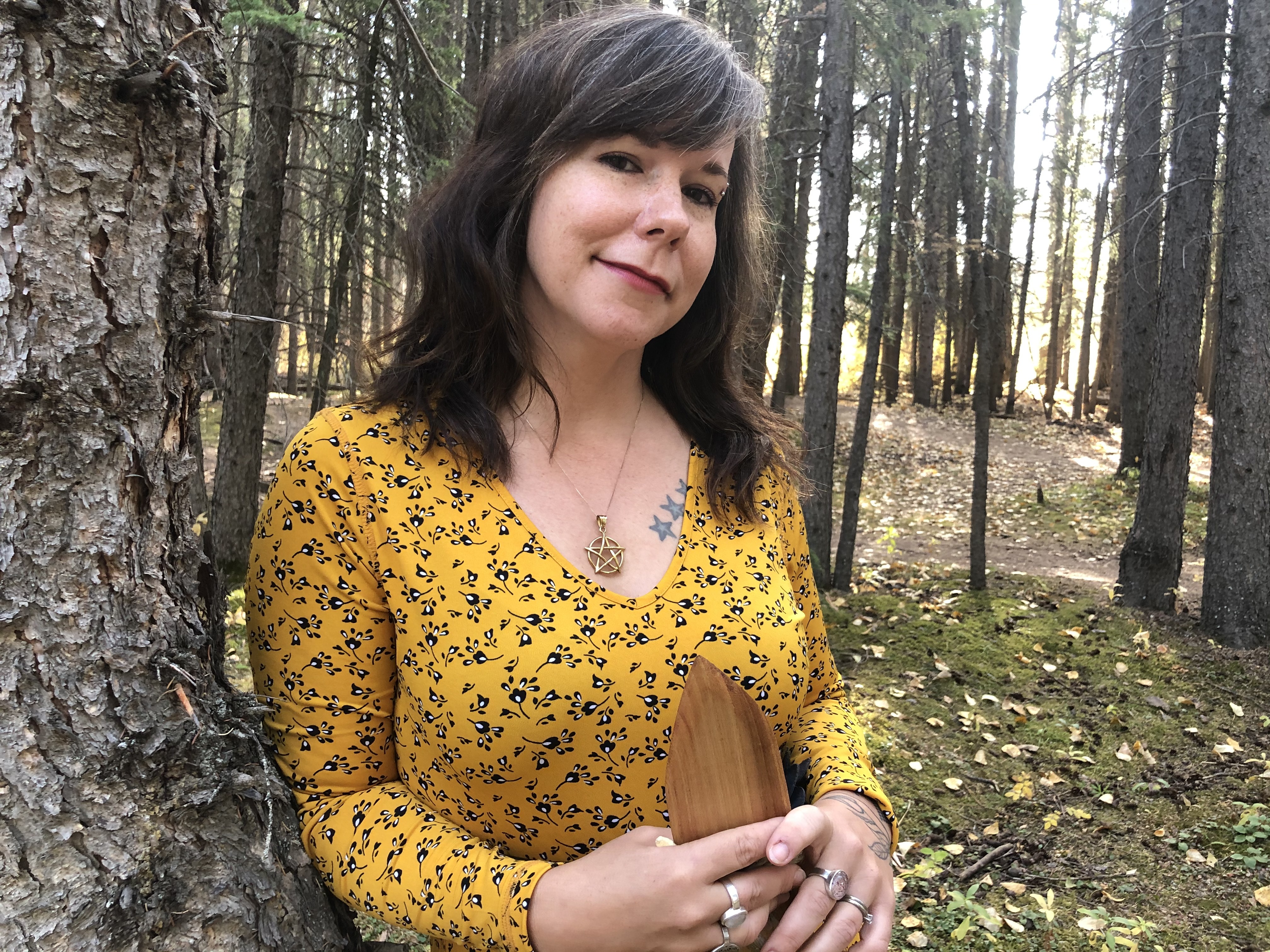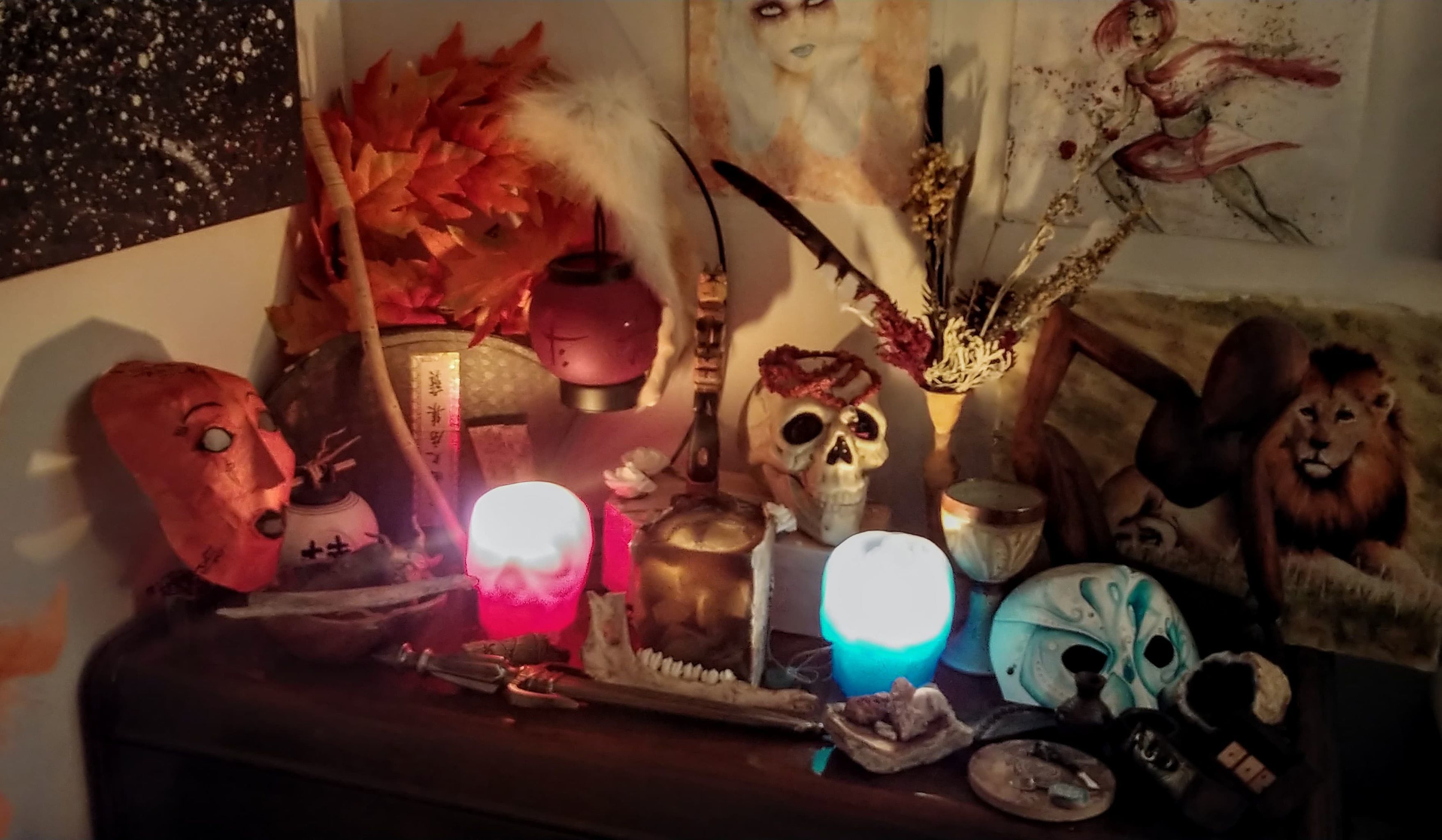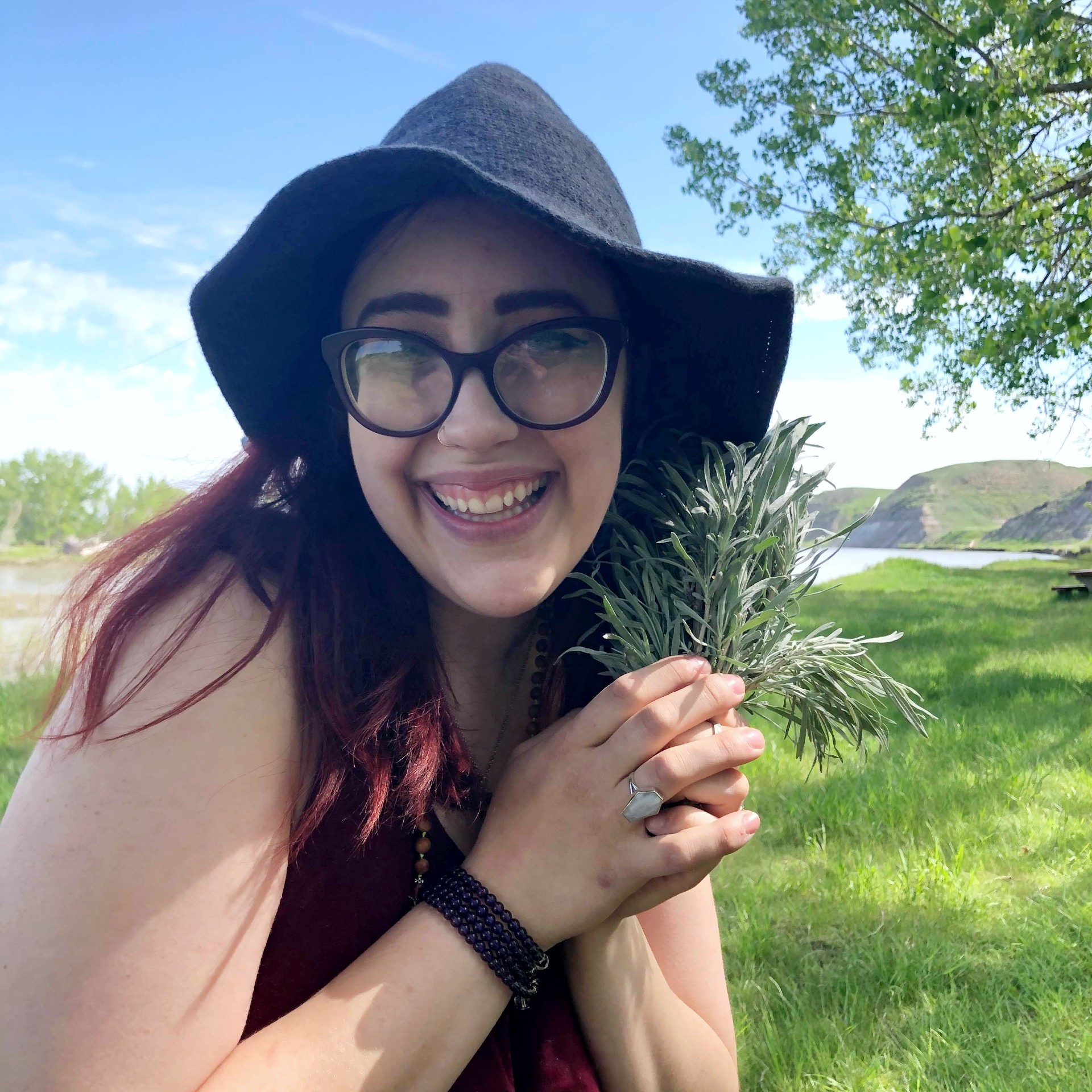October 31, 2020
We’ve all seen and heard the stereotypes used to describe witches, from folklore, cartoons, and Hollywood that make these Halloween figures seem cute, or magical or downright scary.
Flying broom. Black cat. Pointy hat. Cauldron. Cackle. Spells. Black magic.
Yet after speaking with six women from across the province who identify as witches, the reality is less spooky and more spiritual. They do use some of these symbols — just not in the way many people may think.
“When you say witch, people, a lot of people have a bad thing: ‘We eat small children, we are satan worshippers, or we love the devil, or we sacrifice things. Obviously it's not that,” said Lynnzee Jackson, mother of two living in Taber, Alta.
Jackson, 33, is one of the founders of the Alberta Witches Association, a Facebook group that is about educating witches about traditions, history and spellwork, and at the same time creating a sense of community and support. It’s one of several witches groups in the province.
“There's so many new people in there, they call themselves baby witches…. They come and they're looking for a place to learn,” said Jackson.
She says her membership has grown from 150 to more than 1,200 in less than a year and encompasses people from many different religious and cultural backgrounds, including Indigenous, Celtic and Christian.
Jackson says witchcraft is not about being able to disappear or turn someone into a toad. It’s also not like “magic” as in stage magic, a la David Blaine. That's why some witches prefer to call it “magick,” meaning “utilizing natural forces around us to bring about change,” according to the Urban Dictionary.
Rather, she says, it is a way of life.
She says it is about connecting with nature and the Earth’s energy forces, and then using that energy to help manifest one’s intentions, whether that’s being creative, at peace, financially stable or in a loving relationship.
She says it includes gratitude and sending out good vibrations.
“There’s a little bit of witch in everybody,” added Jackson.
What makes a witch a witch?
Jackson says each witch will answer that question differently.
She says some people follow specific traditions, rules, moon cycles or Wicca, a pagan religion, whereas other witches are less restrictive.
“I don’t follow a book that says do A, B, C, D. I just make up things as I go along and do what feels right,” said Jackson.
Jackson says that as a child, she used to mix potions with mud, grass and flowers.
Now she says she does spellwork, candle work (the burning of a candle to set a new goal or ask for a sign), smoke cleansing (the burning of herbs to clear out negative energy, offer protection or other reason), meditation and a lot of research. She says she also works with crystals and stones.
Jackson says she, like all witches, also practises magick, which is different from magic.
Jackson says she’s assisted people struggling financially to help them achieve more abundance.
“You may be looking for the lottery, but that's not realistic, right? So it teaches you where to find those blessings and how, you know, something as simple as a job opportunity could really be what you need,” said Jackson.

Paige Thompson, a Calgary witch and mother of two young boys, says she’s worked with people who struggle with fertility issues.
She says she’s cast fertility spells twice and both times the women became pregnant.
She says her spells vary depending on the problem.
In one case, where the woman had suffered multiple miscarriages, she says she used an acorn, a red ribbon and a goddess statue, which she says represented a baby, an umbilical cord and a mother.
First, she says, she wrapped the ribbon around the acorn and then she wrapped the acorn around the goddess’s hands so the statue appeared to be cradling the acorn — symbolizing a womb for the baby.
“As soon as it happened, I was like, this is going to work. I know it's going to work,” said Thompson, 36.
She adds it’s hard to know exactly why a spell worked, whether it's a coincidence or the women believing it helped them to relax.
Thompson says she’s been a witch since she was 13. She grew up on a farm in Saskatchewan and recalls some unusual experiences with birds.
Once while out for a walk she says her intuition told her to go down a certain path where a raven was sitting on a stump. She says it didn’t move as she inched closer to it. She says a voice inside her then told her to pick it up so she did. She says it then expanded its wings and let out a huge caw. She says after she put it back down, it started to hop away. But she says it kept turning back towards her so she followed it. She says it then led her to a small clearing where its mate was waiting. She says she then spent the afternoon watching these two birds.
“It was the weirdest thing,” said Thompson.
“And I went home and I told my mom about it and she goes, well, you know, you can always do those weird little things. And I'm like, OK, yeah, great. So what does that mean?”
Since then, Thompson says she has spent years learning and practising witchcraft and having similarly eerie experiences with animals.
“It's just something in my soul that I'm, like, this is who you are, this is what you do and this is what you've always needed to do, so I feel whole,” said Thompson.
Broom, wand … and mason jars?
Thompson says people always ask what supplies they need to start their witchcraft practice.
“The running joke is mason jars, and they're like, no, really? And I'm like, no, you're going to need a lot of mason jars, you're going to be surprised. So every witch knows where the best Dollaramas are,” said Thompson.
Her sacred place, the main floor den of her two-storey home in southwest Calgary, contains a lot of mason jars filled with herbs she’s either grown or foraged, to make teas and incense.

There are also different animal skulls, bones and hides, used for spell bottles, mojo bags and sachets or in artwork; as well as feathers, crystals, two crystal balls, a wand and a broom.
Thompson says brooms are often used to sweep out negative energy or as a source of protection.
Another witch, Amie Clark, says she hangs one by her front door to keep her family safe.
“I've had people actually walk across the street because they can't walk in front of my property.”

Clark says she comes from a long line of Romanian witches on her mother's side, with a touch of Ukranian superstitions passed down on her father’s side.
She says sometimes she uses her wand to cast a circle for a particular spell, or to put a little more oomph into her magick.
But she says she’s more likely to use her cauldrons: a mini one for burning incense and a larger one, which is actually a crockpot, for making salves to sell.
Thompson says many of the popularized tools are helpful but they alone don’t create the magick.
“It's that deep connection with the Earth, with your deities, with your intention and your intuition that makes you a witch.”
Which witch is which?
Both Thompson and Clark consider themselves hedge witches.
Thomspon says traditionally the hedge witch made tinctures and salves and potions for healing and lived on the “other side of the edge” as outcasts from the community.
But she says they also “jumped the hedge” metaphorically by connecting with the spirit world.
“So she plants her plants, she grows her gardens, she deals with the life side of it, but then she also deals with the other side of the coin as well,” said Thompson.
Others, such as Sabrina Leydan, call themselves a kitchen witch.
Leydan says food is the delivery system for her spells and she puts an intention into everything she makes.
“If I know a lot of people are going to consume whatever I'm making, it's more just the general ‘everybody's going to be happy,’” said Moore from her kitchen in northeast Calgary.
She says when making homemade cough drops, for example, she thinks of keeping her family healthy.
She says she also thinks about each ingredient’s property — both magickal and health related — as she adds them to her recipe.
For example, she says some fruits such as blueberries, raspberries and plums are known as protection fruits.
“You would use them if you were making, say, a pie for someone that's got someone hanging around they don't want around, and they need a little protection for their safety,” said Leydan.
Then there’s Edmonton witch Christy Papadopoulus, who calls herself a green witch.

“I just love being surrounded by green things all the time, because I feel that plants have energy to them, life, and I can feel that life,” said the 27-year-old.
“I will bring plants back from the dead.” Papadopolous says that as a kid she was forbidden to watch Harry Potter, due to her family’s religion, but she was always drawn to magick, crystals and that spiritual path.
There are also eclectic witches, who draw on a little bit of everything; sea witches, who connect with water; and cosmic witches, who look to the planets and stars for guidance — just to name a few.
New year, new start
Some say Halloween (a.k.a. Samhain, or Witches’ New Year) represents new beginnings and opportunities, and is as good a time as any to start a new spiritual path.
Samhain was a Celtic festival celebrated from Oct. 31 to Nov. 1, which marked the end of the harvest season and beginning of winter.
Samhain is also a time when celebrants feel the veil between this world and the spirit world is at its thinnest, allowing witches to feel most connected with spirits from the afterlife.
Many witches will pay tribute to their relatives who have passed during Samhain by setting a place at the kitchen table for them.
“I usually only pick one, because I have lots, so I cycle through them,” said Spruce Grove witch Lynn Stevens.
Stevens says Samhain is the only time of year she does a formal ritual, which includes thanking those who have passed for their influences or reconciling any differences, chanting, scrying (peering into a crystal ball or water to receive messages) and setting her intentions for the new year.
The 43-year-old says she has gone down many roads throughout her spiritual journey thus far, but her mainstay has always been her first interest: witchcraft.
“It just brings about all kinds of primal feelings. Some people get spooked out by it, some people get thrilled by it. It's just a little more than normal, and a little less than normal.”
These six women who shared their stories with CBC News say it's important for anyone who is curious about this path to do their homework first, whether it’s grabbing a book or searching the internet.
“Find something that you are interested in, whether it be the reasons why we have brooms, or the reasons why we wear hats, or what does a cape mean, the purposes for cauldrons. If you’re a plant person already, you could literally look into herbology,” said Jackson.
“There are so many different paths. So right now would be the perfect time to get your foot in the door with what you are already doing at home.”
